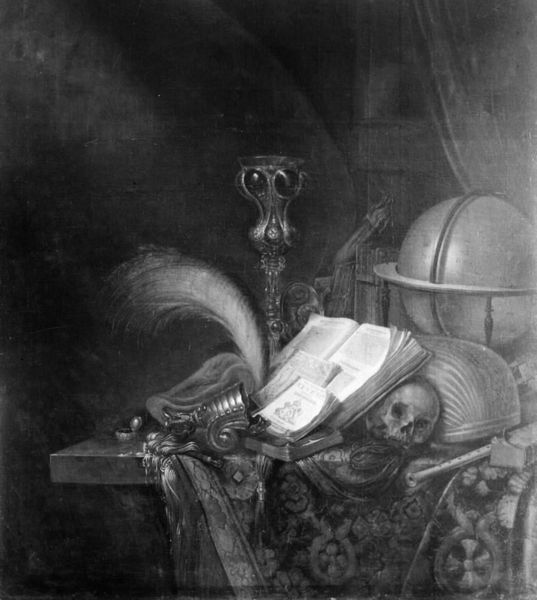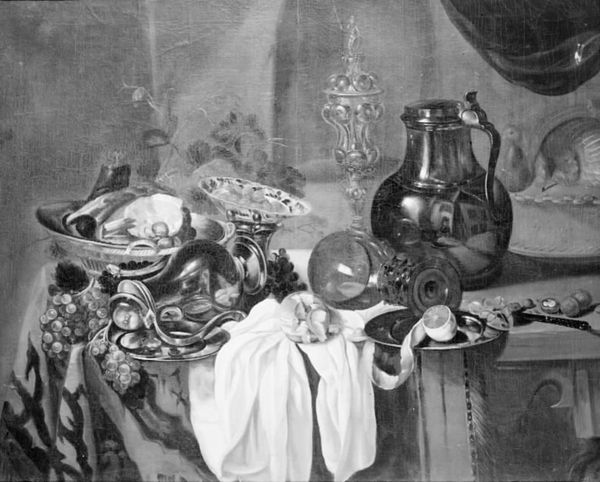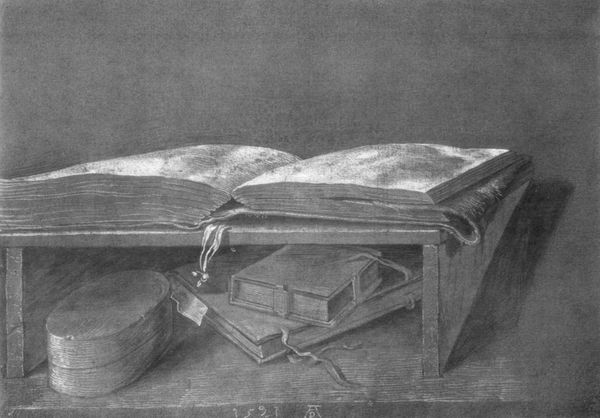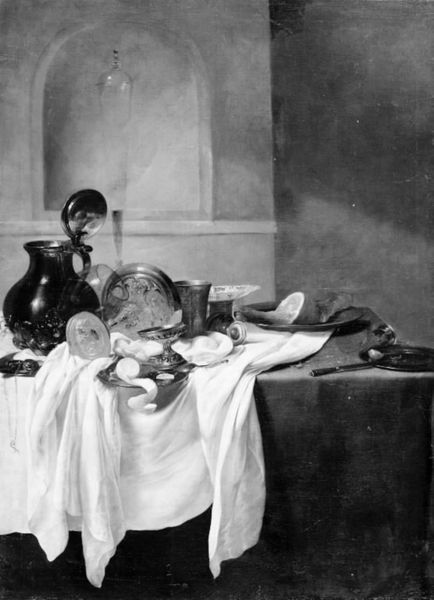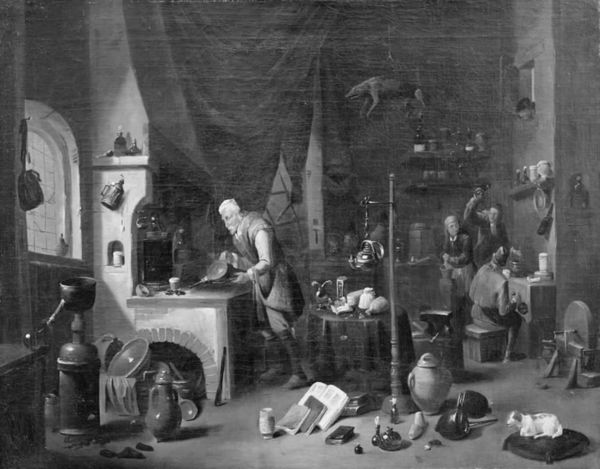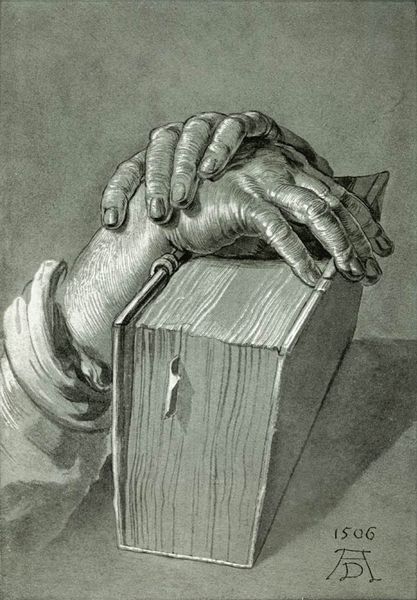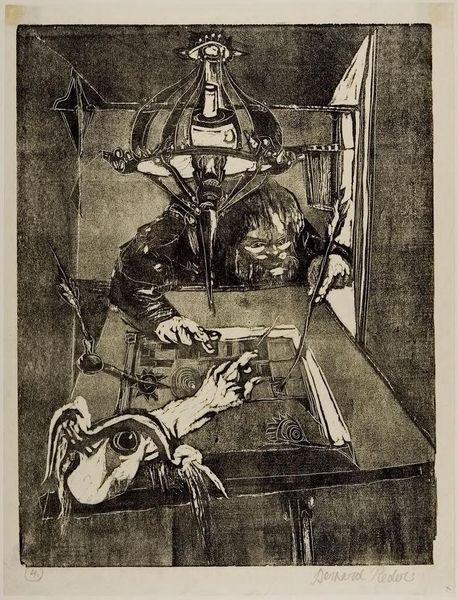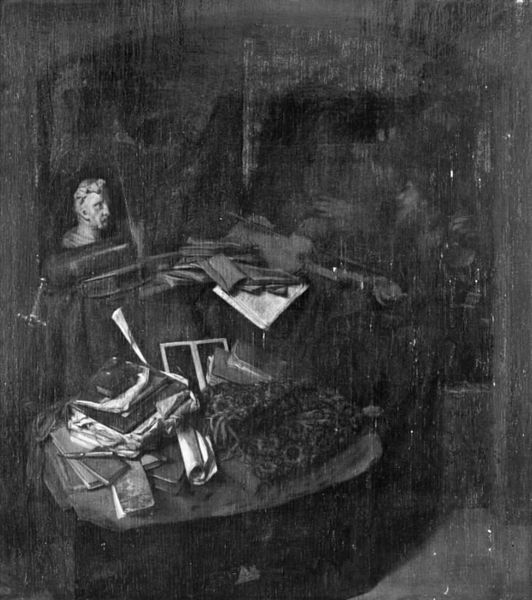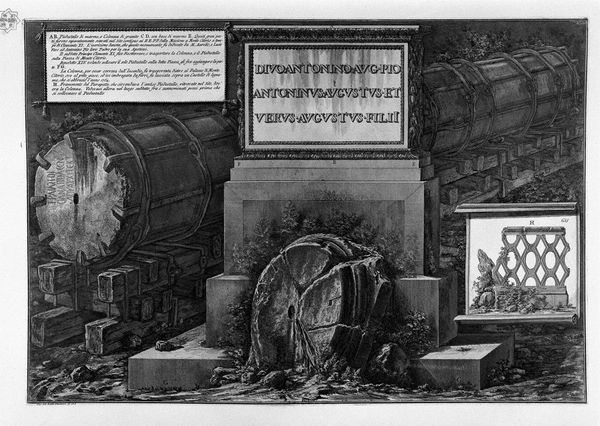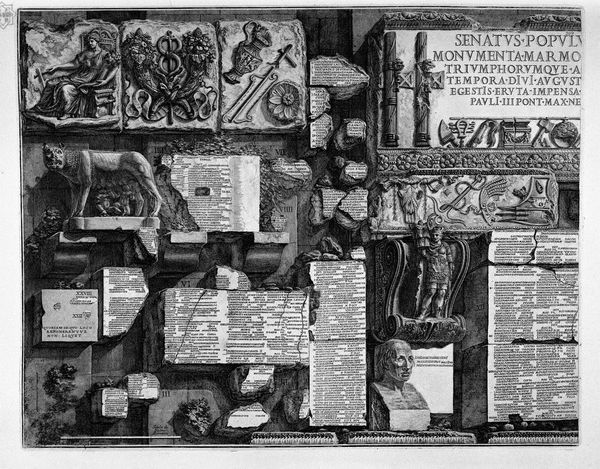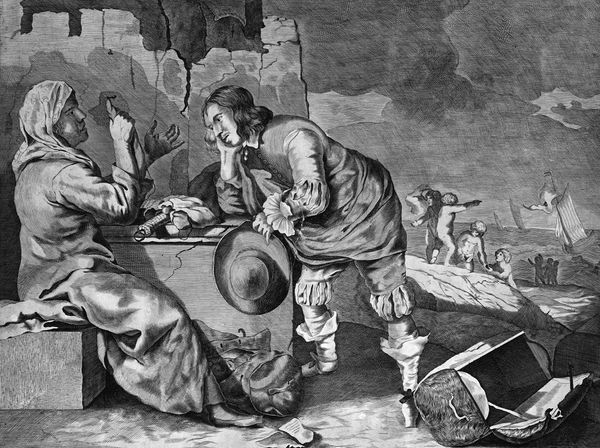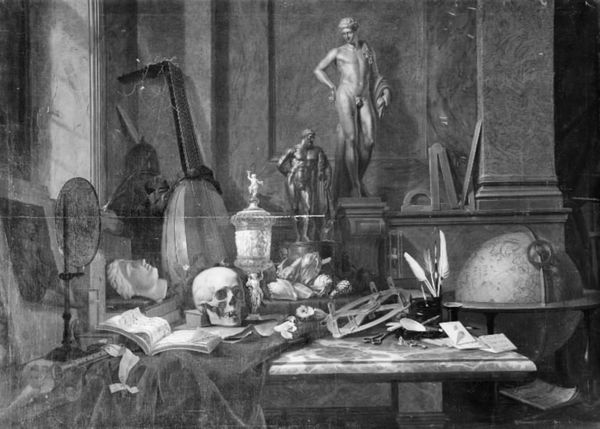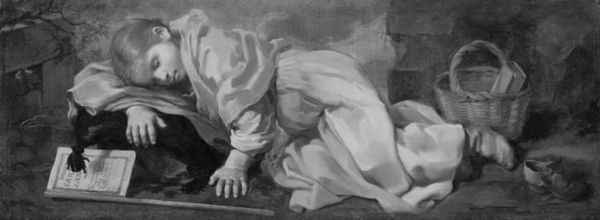
painting, oil-paint, wood
#
baroque
#
painting
#
oil-paint
#
sculpture
#
vanitas
#
black and white
#
chiaroscuro
#
wood
Dimensions: 85 cm (height) x 78 cm (width) (Netto)
Curator: Looking at Jan Vermeulen's "Still Life with Books and Musical Instruments," painted sometime between 1638 and 1674, the first thing that strikes me is the arrangement, how the items are so carefully placed atop the draped table. What’s your impression? Editor: It's somber, even austere. The grayscale tones contribute to this mood, and there's an undeniable sense of contemplation radiating from it. Curator: The painting certainly participates in the tradition of vanitas still life. Let's think about its materiality: oil on wood. We see the careful layering and blending of paint to depict the textures of the books, the fabric, and especially the musical instruments. Vermeulen is clearly concerned with mimicking their presence as objects in the world. Editor: Precisely, the social and cultural placement of objects like musical instruments within Baroque culture—particularly their ephemerality. The suggestion of fleeting time connects it to Dutch Golden Age preoccupations with mortality, which is often reflected in the commissioning class and its social concerns. Curator: Indeed. It appears to address concepts around knowledge, art, and their ultimate futility against the march of time. You see a recurring motif in this era, that reminder that even the greatest accomplishments are ultimately fleeting. What do we read into the positioning? Is it random, an accurate recreation of someone's desk, or calculated? Editor: Everything is calculated, and that becomes obvious upon further viewing! Think of who commissioned these works, wealthy individuals usually, and how they aimed to display these in rooms designed to show power. The staging reflects broader structures of display that existed at the time. Curator: You’re right. From our perspective now, that the wood material grounds it as an object but originally placed as adornment it creates a multi-layered art. I'm struck by how that plays against our current reception. Editor: Right, by understanding these paintings as commodities, and observing their contexts, we begin to unravel a richer story about Baroque-era artmaking and social performance. It moves our experience into something critical, and aware. Curator: A fittingly academic turn. Well, that was certainly insightful to discuss how both making and location adds layers to an experience!
Comments
No comments
Be the first to comment and join the conversation on the ultimate creative platform.
